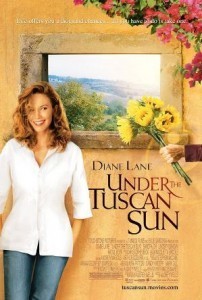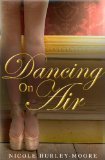Hannah Fielding's Blog, page 108
March 16, 2014
The power of music in the emotional journey
As the O’Jays eloquently put it in their 1970s disco song: ‘I love music.’ And though I’m not sure I can stretch so far as to agree that I love ‘any kind of music’, I certainly love many types! Which makes interweaving music into the books I write an essential and really enjoyable aspect of the writing process.
Back when I was a young woman attending university to study French literature, my tutors drilled into me the power of writing to appeal to all of the reader’s senses. You don’t just want your reader to mentally ‘see’ the scene; you want him or her to smell, taste, feel and hear. The incorporation of music in a scene, then, is a great way to bring the setting to life for the reader.
Because I have wide-ranging music tastes, I like to bring in different kinds of music as I write. The Echoes of Love is set at the turn of the millennium, at that magical time when old bridged into new, which gave me an opportunity to include music that was current for the time but also more nostalgic, romantic Italian music. By tracing the following extract from the book, you can see how I try to create for the reader a feel for the time through the music choices.
Venetia sighed and changed the station to pop music. The radio show was streaming out back to back hits for the new millennium. The recognisable, tumbling strings of Robbie Williams’ ‘Millennium’ played out and she lost herself for a while in the exotic, lush harmonies and insistent rhythm.
)
The next song came on, the Italian hit ‘la Fine del Millennio Vasco Rossi’, jolting her out of her reverie, its fast, hard rhythms such a coarse contrast. She wondered why the Italians had chosen such a rasping, unmelodic song to represent the millennium when they were such a deeply romantic nation.
)
Frowning, she quickly retuned again, landing on a nostalgia radio station. Demis Roussos was singing his achingly romantic 1970s hit: ‘Ever and ever, forever and ever, my destiny will follow you eternally.’ At that moment, inexplicably, the words caught at her heart. Overwhelmed by that deepening of emotion which solitude bestows, Venetia’s throat constricted and for a brief moment her eyes welled up with tears of self-pity. They trembled at the edge of her lids, but she was quick to restrain them, chastising herself for being so weak and spineless.
)
As you can see here, the music is not merely a backdrop to the story – like a piece of scenery on a stage with which the actor does not interact. Music has the power to impact on the emotional journey of the character. Robbie Williams makes Venetia feel happy and ‘lost’; Vasco Rossi jars her uncomfortably; Demis Roussos moves her and forces her to address grief lurking within.
Here is another example from the book:
Venetia sighed as she turned on the radio. She tuned into the Don Giovanni show and its Italian nostalgia songs and heard ‘E Salutana Per Me’ by Raffaella Carrà playing. Finding herself humming along to the beautiful, haunting melody, she smiled ruefully. ‘Credi davvero/Che sia un mistero/Quello che un uomo fa? Do you really think that it is a mystery what a man does? Sí, lo so che nell’amore/C’è chi vince, c’è chi perde, I know that with love there are those who win and those who lose…’ Would she win or lose? Despite all that she knew – of Paolo’s reputation as a womaniser, of her own heart’s mystery – Venetia was secretly beguiled by the notion that some tiny magic might befall her one day, and destiny would show its felicitous hand.
)
The lyrics of the classic Italian song spark an emotional thought process, helping Venetia along the way to fathoming how she feels about Paolo.
So, I use music in my writing to help reflect or transform a character’s mood. But that makes the character’s experience of the music sound so solitary, insular. In truth, when I choose a song and write it into a book, I’m hoping for more than that for my character – I’m taking his or her inner world and connecting it to that experienced by others. The American writer Harry Allen Overstreet wrote:
I have my own particular sorrows, loves, delights; and you have yours. But sorrow, gladness, yearning, hope, love, belong to all of us, in all times and in all places. Music is the only means whereby we feel these emotions in their universality.
That universality is what I hope for: to show that my one story is but a small piece of the jigsaw that is The Great Love Story.
Music – “the universal language of mankind”.
March 14, 2014
Book review: Dancing on Air by Nicole Hurley-Moore
A must-read for anyone who loves The Phantom of the Opera…
Having been a keen ballerina in my youth, and ever since a regular visitor to the ballet, I was at once attracted to a romance in which the heroine is a dancer. And as soon as I began reading, I found parallels to Gaston Leroux’s timeless classic – the theatre backdrop, the orphaned dancer protégé, the dance mistress, the prima donna, the higher-class love interest and, most compelling of all, the dark villain of the piece, in this case all the more terrifying for the fact he is too real and not remotely phantom-like.
I liked the main characters, Lisette and Evander (great names!), and especially the parts told from Evander’s point of view, which allow us to get inside his mind and see how he feels. Lisette is no push-over, and I respected her for not falling straight at Evander’s feet: when Evander early on declares ‘I am forever your servant’, she merely replies, ‘Forever is a long time, my lord.’
The descriptions of the dancing swept me away – so romantic and transformational; the stage is a means by which Lisette can transcend her somewhat bleak life and live the fairytale. As one character puts it to Evander: ‘You live in a bright fantasy world, filled with grand houses, money and opportunity. These girls have nothing and live in the dirt and poverty of the London back streets.’
I also enjoyed the atmospheric descriptions of Victorian London: ‘There was a fine, misty rain that clung to all the surfaces like a glittering mantle. It coated the street with a shiny slick. It was carried on a cold breeze that would its way through the darkened buildings and the crowded city.’
Most of all, I was intrigued by the vein of darkness running through the book. This is no light, fluffy romance – in this book you encounter devious plotting and heartless abuse and, ultimately, murder. The ending has everything you could want, including a dramatic showdown with Lord De Vale which, for me, ended perfectly.
A wonderful book for those who love the arts world and the age-old tradition of romantic melodrama.
I was offered this book in exchange for a fair review via NetGalley.
Dancing on Air is available now from Amazon; click on the book cover below to visit the store.
March 12, 2014
The writer’s support staff
 Authors are often, by nature, solitary sorts. We have to be in order to carry out the work of writing – many hours alone in our own fantasy world. Recently, I blogged on ‘The lonely writer’, and I included the opinion of writer Isaac Asimov:
Authors are often, by nature, solitary sorts. We have to be in order to carry out the work of writing – many hours alone in our own fantasy world. Recently, I blogged on ‘The lonely writer’, and I included the opinion of writer Isaac Asimov:
Writing is a lonely job. Even if a writer socializes regularly, when he gets down to the real business of his life, it is he and his type writer or word processor. No one else is or can be involved in the matter.
Certainly, I think, Asimov is right that writing can be lonely. But is it true to say that ‘No one else is or can be involved in the matter’? Or do, in fact, we writers need people to get involved with our work in the role of supporter?
This month Mslexia, the ‘magazine for women who write’, ran an article drawing together findings from a survey it conducted on the attitudes of writers’ partners. The survey was entitled ‘How do the qualities of your actual partner compare with those of your ideal?’, and the results were illuminating. Of the 2,304 respondents, the following most popular items on a ‘wish list’ for a partner emerged:
Respects what I am trying to achieve creatively: 91%
Facilitates my writing time: 79%
Takes on a fair share of domestic work and admin: 68%
Encourages me to seek out writing opportunities: 48%
Gives me useful feedback on writing: 41%
Takes on a fair share of care for dependants: 34%
Reads widely and is able to discuss literary matters: 28%
Comparing results for actual and fantasy partners for all these items on the list (there were other, less popular ones, too), actual partners did not win out in any category. Taking respect as an example, only 64% of writers felt their partners respected their creative endeavours.
The article makes for thought-provoking reading. Clearly, some of the respondents are getting wonderful support from their partners (36%, at least, feel ‘unhindered’ by their partner), but 301 respondents were in relationships that do not nurture their creativity –‘301 too many in my book’ quite rightly notes the editor!
Should we writers be looking to our partners for support and encouragement? Ideally, I’d say yes. My own husband is wonderfully supportive of my writing – all my family are, in fact; and that has been instrumental in my blossoming as an author. But I am lucky, and if those close to you aren’t ‘gung-ho’ when it comes to your writing, that doesn’t have to be a reason to struggle.
As a minimum, you need those close to you to respect your writing, and help you find the room in your life to follow this pursuit that fulfils you. But as for items on the wish list like encouraging you to seek out writing opportunities, and give useful feedback on writing, and read widely and be able to discuss literary matters – these are means of support that anyone in your life can carry out: a friend, a writing buddy, a mentor, a tutor.
Do we need support as writers? Yes. But that support can come from all kinds of sources. In fact, the more sources, the merrier!
March 11, 2014
Musical inspiration for The Echoes of Love
Music is a great source of inspiration to me, whether classical or modern, and in any language. I have a huge repertoire of songs from all over the world that I listen to while doing my research and it helps me create the initial atmosphere for my story.
For Burning Embers I listened to African music and world music from the 1970s (see my blog post ‘A soundtrack to Burning Embers’), and a jazz solo (see ‘Music to write books by: Fausto Pappeti’).
For my Spanish trilogy (watch this space for new of publication soon!) I chose various interpretations of Flamenco (it differs from province to province as each has its own way of singing Flamenco), and songs from the modern Spanish singers like Julio Iglesias and the Gypsy Kings.
During the research for my Italian novel, The Echoes of Love, I surrounded myself with Italian folklore music and the wonderful voices of Peppino di Capri, Raffaella Carrà, Mina and I Santo California (see my blog posts ‘A signature tune for my new novel’ and ‘“Que C’est Triste Venise” (How Sad Venice Can Be)’. And I listened extensively to classical music.
Today I want to share with you two pieces of classical music that inspired me when I wrote the scenes of The Echoes of Love that are set in Venice.
The first is from Songs Without Words, nineteenth-century piano compositions by the Romantic composer Felix Mendelssohn. It is known as the ‘Venetian Boat Song’ (‘Venezianisches Gondellied’). It’s so wonderful melodic and romantic, and really calls to mind for me images of drifting on a canal in a gondola, drinking in the fine architecture of the ancient city of Venice.
The second piece of music is called Three Songs of Venice, and it comprises ‘The Gondolier’, ‘St Mark’s Square’ and ‘Rain Storm’ – each conveying a feel of city, from the lulling rhythm of the gondola to the bustle of St Mark’s Square. They were written by composer Michael Head for the 1977 ‘Save Venice Fund’ concert. I especially love the line ‘A city more beautiful than any other’ in the final song.
March 10, 2014
THE COFFEE CONNOISSEUR QUICK QUIZ… Answers
Here are the answers to the coffee quiz. How did you do?
1. What is the origin of the word ‘mocha’?
c) A seaport in Yemen from which coffee is shipped.
2. What is espresso?
c) A way of preparing coffee.
3. What are the ingredients of an Americano?
a) Water and espresso.
4. How does a latte macchiato differ from a caffe macchiato?
a) The milk comes first, then the espresso.
5. What are the two main types of coffee bean?
b) Arabica and Java.
6. What is a caffe misto known as in France?
a) café au lait.
7. From what do we get coffee beans?
a) Berries.
8. Which of the following is not a popular addition to coffee in worldwide cultures?
c) Sage.
9. On the list of most traded commodities internationally, where does coffee fall?
b) Second.
10. What flavour is a caffè alla nocciola?
c) Hazelnut.
March 9, 2014
How well do you know your coffee? Take the Coffee Connoisseur Quick Quiz…
Italians love coffee: fact. Most drink it as if it were water, and to be an Italian who does not partake is to be something of an outsider.
I am a coffee lover – what writer isn’t! We need it to feed and energise the muse. So when researching and writing my novel The Echoes of Love, which is set in Venice and Tuscany, I was only too happy get in the Italian spirit.
But when it comes to coffee, what exactly is ‘the Italian spirit’? Well, it’s a firmly embraced coffee culture that spans the entire nation and comes with its own set of rules and expectations. In fact, if you really want to embrace the Italian passion for coffee, you need to follow the Ten Commandments of Il Culto del Caffè as outlined in the Telegraph.
To be Italian, then, is to be serious about coffee. That means you drink ‘proper’, not frivolous, coffee. As the author of the Telegraph article points out, “Requesting a mint frappuccino in Italy is like asking for a single malt whisky and lemonade with a swizzle stick in a Glasgow pub.” But just how well do you know your coffees?
I’ve put together a quick quiz to test your knowledge. I’ll post the answers tomorrow. Good luck!
THE COFFEE CONNOISSEUR QUICK QUIZ
1. What is the origin of the word ‘mocha’?
a) The short form of ‘moch chocolate’.
b) The Africaans word for chocolate.
c) A seaport in Yemen from which coffee is shipped.
2. What is espresso?
a) A type of bean.
b) A type of blend.
c) A way of preparing coffee.
3. What are the ingredients of an Americano?
a) Water and espresso.
b) Milk and espresso.
c) Foam and espresso.
4. How does a latte macchiato differ from a caffe macchiato?
a) The milk comes first, then the espresso.
b) The espresso comes first, then the milk.
c) It contains a double shot of espresso.
5. What are the two main types of coffee bean?
a) Arabica and Robusta.
b) Arabica and Java.
c) Java and Robusta.
6. What is a caffe misto known as in France?
a) café au lait.
b) café crème.
c) café noir.
7. From what do we get coffee beans?
a) Berries.
b) Seed pods.
c) Roots.
8. Which of the following is not a popular addition to coffee in worldwide cultures?
a) Peppercorns.
b) Salt.
c) Sage.
9. On the list of most traded commodities internationally, where does coffee fall?
a) First.
b) Second.
c) Tenth.
10. What flavour is a caffè alla nocciola?
a) Caramel.
b) Vanilla.
c) Hazelnut.
March 8, 2014
Breaking down The Echoes of Love
Back when I published my first novel, Burning Embers, I wrote a post in which I analysed how the manuscript broke down in terms of word and phrase frequency. I was keen to do the same for my new novel, The Echoes of Love, to see how the two compare.
As I did for Burning Embers, I ran a phrase frequency check on The Echoes of Love – searching for the most used three-word phrases. Two of the book’s themes shine through:
Eyes as a window to the soul: In his eyes; closed her eyes; looking at her; his eyes were; looked at him
Mirage and mystery: seemed to be; in the air; the memory of; in the dark
Feelings: in love with; made her feel; the feel of
Passion: I want you; into his arms
Then I checked for word frequency. Topping the list are words of little interest, like the, and, of and her, so I scanned down until I reached Venetia, the name of my heroine. Venetia appears 1,385 times in the manuscript; Paolo, the hero’s name, 992 times. It is fitting that they should appear so highly in the frequency list, for they really are the focus of the story.
Next, I looked for words that are meaningful to the story. All of the following are key words in the book (listed in order of frequency): eyes, man, face, love, felt, looked, thought, heart, never, life, hand, woman, night, body, voice, moment, cara, blue, beautiful, mouth, light, smile, morning, sea, lips, sun, sky, past, fingers, breath, skin, together, soft, lost, home, golden, memory, desire, passion, green, fire, kiss, dream, amore, emotion, sweet, moon. Taken together, they encapsulate the heart of the book.
One can sort these most popular key words into categories that convey various aspects of the love story:
Body – eyes, face, heart, hand, body, voice, mouth, smile, lips, fingers, breath, skin, kiss
Connection – looked, together
Inner world – thought, home, memory, lost, past, dream
Impressions – sweet, soft, beautiful
Emotion – love, felt, heart, cara, emotion, passion, desire, fire, amore
Moments – night, moment, morning
Surroundings – sea, light, sun, sky, blue, golden, green, moon
In Burning Embers, eyes is the most commonly used noun, and I was intrigued to see that the same in the case in The Echoes of Love: eyes appears 396 times in the novel. This reflects my own belief that a person’s true self shines through in their eyes – for me, romance is all about eye contact. Interestingly, face features prominently in the book too (201): those of you who have read the book will understand why Paolo’s face, in particular, is a very important aspect of the story.
Again, as in Burning Embers, man (239) is more prevalent than woman (137) – this is a story, after all, told largely through a woman’s perspective.
Finally, the most-used colour by far in the book is blue, with 106 mentions. This really reflects the skies and waters of the Italian setting, and the eyes of Paolo, which are vivid and beautiful and, for Venetia, somehow familiar…
March 5, 2014
The Echoes of Love makes The Sun newspaper’s top six most romantic reads…
I’m delighted to share a clipping from today’s Sun newspaper, in which The Echoes of Love is featured alongside some great romantic reads as a top romance novel.
Tuscan week: Biscotti di Prato recipe
 No doubt you’ve come across biscotti in your local coffee house – crunchy, dry almond Italian biscuits that are ideal for dunking into a cappuccino. Indeed, I so love the combination that I gave the heroine of my novel The Echoes of Love, Venetia, a daily habit: each morning she picks up a cappuccino and biscotti from a coffee shop on San Marco Square on her way to work. How every day should begin, don’t you agree?
No doubt you’ve come across biscotti in your local coffee house – crunchy, dry almond Italian biscuits that are ideal for dunking into a cappuccino. Indeed, I so love the combination that I gave the heroine of my novel The Echoes of Love, Venetia, a daily habit: each morning she picks up a cappuccino and biscotti from a coffee shop on San Marco Square on her way to work. How every day should begin, don’t you agree?
The full name of this popular treat is biscotti di Prato, because they originate from Prato in Tuscany, but the Italians know them as cantuccini. The traditional recipe incorporates flour, sugar, eggs, pine nuts and almonds, and what gives the biscotti its distinctive crunch is that it is baked twice, first in one roll, and then again once sliced into tranches. They’re served after dinner, softened by dunking in orange juice or the popular Tuscan dessert wine vin santo (translates literally as ‘holy wine’, and it certainly tastes like it!).
Here’s a recipe for you to try at home. The great thing about this biscotti is that it’s a guilt-free treat: no fats or oils are used in the baking. So pile these biscuits high beside your coffee!
500g white bread flour
300g caster sugar
250g whole unpeeled almonds,
50g pine nuts
4 eggs, beaten
1 tsp baking powder
1 tsp vanilla essence
pinch of salt
Sift the flour, salt and baking powder into a bowl and stir in the sugar. Add the eggs and mix until smooth, then add the remaining ingredients.
Roll out the dough into a sausage (approximately 2-3 cm in diameter).
Place on a baking sheet lined with greaseproof paper.
Bake in a preheated oven at 180°C (360°F) for half an hour.
Remove from the oven and lower the oven temperature to 150°C (300°F).
Once the roll is cooled sufficiently for you to touch it, cut into 1-centimetres slices and lie them broad-side down on the greaseproof paper.
Return to the oven and bake for quarter of an hour.
Remove from the oven and cool thoroughly.
The biscotti will keep in an airtight container for at least a week.
Variation: add the rind of one lemon for a zestier biscuit.
Enjoy!
March 3, 2014
Tuscany week: ‘Under the Tuscan Sun’ movie
 The perfect film for me because it includes:
The perfect film for me because it includes:
a) Beautiful scenery – this is the kind of film you’ll watch over and over for the escapism factor.
b) Writing – I love creative heroines, and I identify with Frances’s need to get away in order to find her muse again.
c) Renovation – one of my own passions; my properties in both Kent and France were wrecks when I bought them, and I very much enjoyed making them into homes.
d) Passion, romance, love, love, love!
Diane Lane plays Frances Mayes, an American writer who’s struggling to put her life back together after the breakdown of her marriage. When a friend offers her a free holiday in Tuscany, Frances grabs the chance to get away from it all, in the hope that some Italian sunshine can shake her out of her gloom and her writers’ block.
And so the action of the film moves to beautiful Tuscany – so many wonderful panoramas to behold! During her holiday Frances indeed finds a way out of her depression: by means of extending her holiday into permanent residency, when she purchases a dilapidated villa and hires a crew of workers to renovate it. Over time, Frances settles into her Tuscan life, making friends with some interesting characters, and she helps a local Romeo and Juliet encountering obstacles in their love by offering her home as a wedding venue.
And does Frances find love herself? Well, to tell you that would be to ruin the ending! Suffice it to say that, soft-hearted romantic that I am, if I’m recommending this movie, you know you can expect to have a smile on your face come the end.
Watch with a glass of fine Chianti Classico in hand for a true Tuscan taste. (Don’t be put off by the Hannibal Lector connotations of Chianti wine: he liked it for a very good reason! It comes from the Chianti region, in central Tuscany, and is made with the delicious Sangiovese grape, so called for the Latin sanguis Jovis – ‘blood of Jove’; Jove being the king of the Roman gods, Jupiter.)
And if you enjoy the movie, be sure to check out the memoir on which it is based. As well as evocative writing, the book contains some wonderful Italian recipes.









